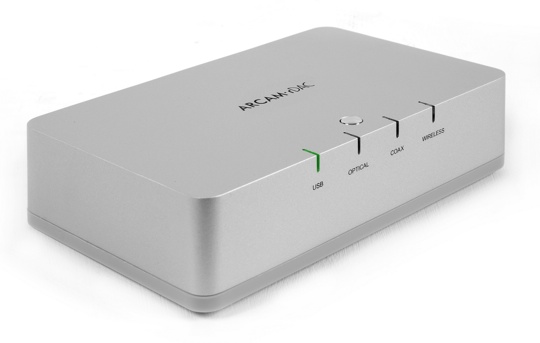This article is more than 1 year old
Arcam Solo rDac wireless digital-to-analogue converter
Stream spirit
Review Wireless music systems are commonplace nowadays, but some folk still prefer to use a standalone digital-to-analogue converter to liberate their digital music library, and these are the punters Arcam is pitching its Solo rDac at.

Arcam's rDac: minmalist styling
As you might expect from an up-market British audio kit maker like Arcam, the rDac's look is minimalist, with no controls other than a power switch at the back and a few status LEDs on the front. It's well made, though, with a very solid aluminium shell.
Round the back you will find type-B USB - for feeding the gadget from a computer, rather than a USB Flash drive - plus optical Toslink and gold-plated SPDIF coaxial inputs, making the rDac a piece of cake to connect to a wide range of sources. Output is via two gold-plated RCA phono sockets.
One other input is invisible: the rDac can take a wireless feed from Arcam's rWand and rWave. The rWand connects to your iDevice's 30-pin dock connector, while the rWave is a USB dongle. Both are sold separately for around £70.

No shortage of portage
Connected wirelessly, the rDac will only support files encoded at 16-bit/44.1kHz, but use the coaxial socket and those numbers increase to 24-bit/192kHz. In between, cabled USB tops out at 24/96 and optical at 24/48.
